The Manager considers both
industry- and company-
specific dynamics to identify
the peers with which the
Company competes for assets,
stockholders and talent |
Compensation Peer Group
Affiliated Managers Group, Inc. | Eaton Vance Corp. | Northern Trust Corporation | | |
AGNC Investment Corp. | Franklin Resources, Inc. | Raymond James Financial, Inc. |
Apollo Global Management, LLC | Invesco Ltd. | Starwood Property Trust, Inc. |
Ameriprise Financial, Inc. | Jefferies Financial Group Inc. | T. Rowe Price Group, Inc. |
Ares Capital Corporation | KKR & Co. L.P. | The Blackstone Group L.P. |
Ares Management Corp. | Lazard Ltd | The Carlyle Group L.P. |
ARMOUR Residential REIT, Inc. | Legg Mason, Inc. | Waddell & Reed Financial, Inc. |
E*TRADE Financial Corporation | New Residential Investment Corp. | |
40 | Annaly Capital Management Inc. 2019 Proxy Statement | |
|
Table of Contents
Executive Compensation
| | Advisory Approval of Executive Compensation The Board is committed to corporate governance best practices and recognizes the significant interest of stockholders in executive compensation matters. The Company is providing this non-binding advisory vote pursuant to Section 14A of the Exchange Act. In considering this vote, the Company invites its stockholders to review the “Compensation Discussion and Analysis” and “Executive Compensation Tables” above. As described in detail under the headings “Management Structure” and “Compensation Paid by the Manager to the Named Executive Officers” above and “CompensationCompensation Discussion and Analysis” below,Analysis, the CompanyMDC Committee is externally-managed by the Manager pursuant to the Management Agreement between the Manager and the Company. The Manager is responsible for paying all compensation amounts to the NEOs. The Company pays the Manager a management fee, and the Manager uses a portionproud of the proceeds fromsignificant steps taken to re-design the management fee to payexecutive compensation toprogram for 2020 following the NEOs other than Mr. Keyes (who does not receive any compensation for serving asInternalization and is focused on continually enhancing the Company’s Chairman, CEOcompensation framework to reflect strong compensation governance and President, but hasreward sustained value creation. The MDC Committee is committed to establishing an interest in the management fee as an indirect equityholder of the Manager). However, the Company does not determine theexecutive compensation program that the Manager paysattracts, retains and incentivizes top executive talent and generates long-term value for stockholders by directly linking compensation payout to the NEOs, the Company does not allocate any specific portion of the management fee that the Company pays to the compensation of the NEOs, and the Company does not reimburse the Manager for the cost of such compensation. The Manager makes all decisions relating to the compensation of the NEOs based on the factors the Manager determines to be appropriate, including both individual and Company performance and subject to the terms of any employment agreement entered into between the Manager and an individual NEO.without encouraging unnecessary risk taking. The Company is not party to any employment agreements entered into between the Manager and individual NEOs. However, the Company is party to a Severance and Noncompetition Agreement (the “CEO Severance Agreement”) with Mr. Keyes, which provides for cash severance to be paid by the Company to Mr. Keyes in certain termination events. For more information, see “CEO Severance Agreement” and “Potential Payments upon Termination or Change in Control” below.
The NEOs are eligible to receive equity awards pursuant to the Company’s equity incentive plan, which is administered by the Compensation Committee. No equity awards were made to any of the NEOs in 2018. In 2018, the Company did not pay any compensation to the NEOs.
The Board unanimously recommends that the stockholders vote in favor of the following resolution: “RESOLVED, that the compensation paid to the Company’s named executive officers, as disclosed pursuant to Item 402 of Regulation S-K, including the Compensation Discussion and Analysis, compensation tables and related narrative discussion, is hereby APPROVED.” While this vote is advisory and non-binding, the Board and Compensationthe MDC Committee value the views of the Company’s stockholders and will consider the voting results when making compensation decisions regardingin the CEO Severance Agreement and the Company’s equity incentive plans.future. |
 | The Board unanimously recommends a voteFOR the Approval of this Resolution. |
| Annaly Capital Management Inc. 2019 Proxy Statement | 41 |
|
Table of Contents
Executive Compensation
Compensation Discussion and Analysis
As discussed above, the Manager pays all of the compensation, including benefits, to the NEOs. As a private company not subject to the disclosure requirements of the SEC, the Manager has sole discretion to determine the compensation it pays to its employees, including the NEOs. The Manager makes all compensation determinations for the NEOs without any direction by the Board and without reference to any specific policies or programs under the oversight of the Board or the Compensation Committee. The Manager compensates the NEOs for a variety of services performed for the benefit of the Manager. Thus, the compensation paid by the Manager to its employees who are serving as the Company’s NEOs is not considered to be part of the Company’s executive compensation program.
Pursuant to the terms of the Management Agreement, the Company pays the Manager a monthly management fee for its management services equal to 1/12thof the sum of: (i) 1.05% of Base Stockholders’ Equity(1), and (ii) 0.75% of Incremental Stockholders’ Equity(2). In addition to the management fee, the Company reimburses the Manager for the cost of certain legal, tax, accounting and other support and advisory services provided by employees of the Manager to the Company. During the year ended December 31, 2018, the Company incurred $179.8 million in management fees and $9.2 million in permitted reimbursement payments under the Management Agreement. None of the reimbursement payments were attributable to compensation of the Company’s NEOs. The proceeds of the management fee are used in part to pay compensation to the NEOs other than Mr. Keyes (who does not receive any compensation for serving as the Company’s Chairman, CEO and President, but has an interest in the management fee as an indirect equityholder of the Manager). The Company does not determine the compensation that the Manager pays to the NEOs, the Company does not allocate any specific portion of the management fee that the Company pays to the compensation of the NEOs, and the Company does not reimburse the Manager for the cost of such compensation.
Accordingly, the Company did not pay any cash compensation to the NEOs, nor did the Company grant them any plan-based awards, for 2018. The Company does not provide the NEOs with pension benefits, perquisites or other personal benefits. As a result, no compensation is includable in the Summary Compensation Table.
The Company is not party to any employment agreements entered into between the Manager and individual NEOs. However, the Company is party to the CEO Severance Agreement with Mr. Keyes, which provides for cash severance to be paid by the Company to Mr. Keyes in certain termination events. For more information, see “CEO Severance Agreement” and “Potential Payments upon Termination or Change in Control” below. No “single-trigger” severance amounts are payable to Mr. Keyes solely upon a change in control of the Company.
The Company believes that providing appropriate severance benefits to Mr. Keyes upon certain termination events helps the Company retain Mr. Keyes’ services as its CEO. The CEO Severance Agreement also allows the Company to protect its interests through noncompetition provisions that continue to apply following Mr. Keyes’ termination as CEO of the Company. In connection with its review and recommendation of the CEO Severance Agreement, a special committee of the Board comprised of four independent Directors considered the executive compensation arrangements of its compensation peer group.
Consideration of “Say-on-Pay” Voting Results
At the Company’s 2018 Annual Meeting, over 94% of the votes cast supported the Company’s Say-on-Pay vote. Upon consideration of the high percentage of votes cast in support of the Say-on-Pay vote, along with additional feedback from engagement with stockholders, the Compensation Committee determined it was appropriate to continue providing detailed quantitative information about the Manager’s executive compensation program in the Company’s proxy materials. For additional details, please see “Compensation Paid by the Manager to the Named Executive Officers” above.
The Company and the Board will continue to consider the outcome of future Say-on-Pay votes, as well as stockholder feedback received throughout the year, and invite stockholders to express their views to the Independent Directors as described under “Communications with the Board.”
Over 94% of votes cast supported
the Company’s most recent
Say-on-Pay vote |
Table of Contents
Executive Compensation
Executive Compensation Policies
Stock Ownership Guidelines/Commitments
| Position | | Number of
Individuals | | Annaly Stock Ownership
Guideline/Commitment | | Timeframe to Meet
Guideline/Commitment |
| Chief Executive Officer(1) | | 1 | | $15,000,000 | | July 2020 |
| Other Operating Committee Members(2) | | 11 | | 30% of Annual Total Compensation | | 5 years |
| Managing Directors | | 26 | | 20% of Annual Total Compensation | | 5 years |
| Director-Level Employees | | 32 | | 10% of Annual Total Compensation | | 5 years |
| Total | | 70 | | | | |
The stock ownership guidelines outlined above apply to more than 40% of the Manager’s employees. As of December 31, 2018, over 50% of the Manager’s employees had purchased stock in the open market, which includes senior employees subject to the Company’s stock ownership guidelines as well as junior team members.
Stock Holding Period
The Manager’s employees (including the NEOs) are required to hold for a period of four years the net after-tax shares of Company stock they receive through stock option exercises or vesting of equity incentive awards.
Prohibition on Hedging Company Securities
The Company has a policy prohibiting the Manager’s employees (including the NEOs), employees of the Company and its subsidiaries, and members of the Board from engaging in any hedging transactions with respect to Company securities held by them. Such prohibited transactions include the purchase of any financial instrument (including forward contracts and zero cost collars) designed to hedge or offset any decrease in the market value of Company securities.
Prohibition on Pledging Company Securities
The Company has a policy prohibiting the Manager’s employees (including the NEOs), employees of the Company and its subsidiaries, and members of the Board from holding Company securities in a margin account or pledging Company securities as collateral for a loan.
Risks Related to Compensation Policies and Practices
As discussed above in “Management Structure,” the Compensation Committee is not entitled to approve compensation decisions made by the Manager and the Manager does not consult with the Compensation Committee prior to making any such decisions. Therefore, the Compensation Committee has no compensation policies or practices applicable to, or decision-making role regarding, the manner in which the Manager uses the management fee to compensate the NEOs. However, in connection with the Compensation Committee’s administration of the Company’s equity incentive plan and oversight of the CEO Severance Agreement, the Compensation Committee conducts an annual risk assessment of the Company’s applicable compensation policies and practices. In 2018, the Compensation Committee determined that these compensation policies and practices do not create risks that are reasonably likely to have a material adverse effect on the Company.
Report of the Compensation Committee
The Compensation Committee of the Company has reviewed and discussed the Compensation Discussion and Analysis required by Item 402(b) of Regulation S-K with management and, based on such review and discussions, the Compensation Committee recommended to the Board that the Compensation Discussion and Analysis be included in this Proxy Statement.
Donnell A. Segalas (Chair) | | Jonathan D. Green | | E. Wayne Nordberg | | John H. Schaefer | | Vicki Williams |
Note: For footnoted information, please refer to “Stock Ownership Guidelines/Commitments” in Endnotes section.
| Annaly Capital Management Inc. 2019 Proxy Statement | 43 |
|
Table of Contents
Executive Compensation
Executive Compensation Tables and Related Narrative
Summary Compensation Table
The Company did not pay any compensation to the NEOs, and did not reimburse the Manager for any compensation paid to the NEOs, with respect to the years ended December 31, 2018, December 31, 2017 or December 31, 2016.
Grants of Plan-Based Awards
The Company did not grant the NEOs any plan based awards in 2018.
Outstanding Equity Awards at Fiscal Year-End
None of the NEOs had outstanding equity awards at December 31, 2018.
Options Exercised and Stock Vested
No options were exercised by and no stock vested for the NEOs during 2018.
The Company did not pay any cash or equity compensation to the NEOs for 2018. The Company does not provide them with pension benefits, perquisites or other personal benefits.
|
Pension Benefits and Nonqualified Deferred Compensation
The Company does not provide the NEOs with any benefits pursuant to defined benefit plans and nonqualified deferred compensation plans.
CEO Severance Agreement
On August 1, 2018, the Company and Mr. Keyes entered into the CEO Severance Agreement. The term of the CEO Severance Agreement continues through July 31, 2020, and will automatically renew for successive one-year terms unless either party gives written notice (a “Notice of Non-Renewal”) to the other of its intention not to renew at least 180 days prior to the expiration of the then-current term.
Upon (i) the removal of Mr. Keyes as the Company’s Chief Executive Officer without “cause” (as defined in the CEO Severance Agreement), (ii) the resignation of Mr. Keyes with “good reason” (as defined in the CEO Severance Agreement) or (iii) the expiration of the then-current term following a Notice of Non-Renewal provided by the Company (each, a “Severance Event”), the Company shall pay Mr. Keyes a cash payment equal to $30 million (the “Severance Payment”). The Severance Payment shall be payable in 12 equal monthly installments after Mr. Keyes’ separation from service upon or following a Severance Event (the “Severance Period”); provided that if such separation from service occurs within two years immediately following a “change of control” (as defined in the CEO Severance Agreement), the Severance Payment shall be made in a single lump sum. The payment of the Severance Payment shall be subject to the execution of a waiver and release of claims against the Company and its subsidiaries and affiliates and on Mr. Keyes’ continued compliance with applicable noncompetition provisions. For additional information about the CEO Severance Agreement, see “Compensation Discussion and Analysis.”
Potential Payments upon Termination or Change in Control
The following table sets forth quantitative information with respect to potential payments to Mr. Keyes or his beneficiaries upon various termination events described above, assuming termination on December 31, 2018. Other than Mr. Keyes, the Company has no responsibility to provide any payments or benefits to any NEO in connection with a termination of service or change in control.
| | Type of Termination(1) |
| Executive | | By Company
without Cause | | By Executive
with Good Reason | | Company
Non-Renewal of
Severance Agreement |
| Kevin G. Keyes | | $30,000,000 | | $30,000,000 | | $30,000,000 |
____________________
1. | Payments are subject to the execution of a waiver and release of claims and compliance with applicable noncompetition provisions.
|
44 | Annaly Capital Management Inc. 2019 Proxy Statement | |
|
Table of Contents
Executive Compensation
Compensation Committee Interlocks and Insider Participation
The Compensation Committee is comprised solely of the following Independent Directors: Messrs. Segalas (Chair), Green, Nordberg and Schaefer and Ms. Williams. None of them is serving or has served as an officer or employee of the Company or any affiliate or has any other business relationship or affiliation with the Company, except service as a Director. During 2018, none of the Company’s executive officers served on the compensation committee (or other committee serving an equivalent function) or another entity whose executive officers served on the Compensation Committee or Board.
Ceo Pay Ratio
The Manager is responsible for managing the Company’s affairs pursuant to the Management Agreement and, as of December 31, 2018, directly employed 95% of the individuals who provide services to the Company. The remaining employees are employed by subsidiaries of the Company for regulatory or corporate efficiency reasons. At December 31, 2018, the Company’s measurement date for identifying the median employee, the Company’s subsidiaries had eight full-time employees (and no part-time employees). The Company chose total compensation in accordance with the requirements of the Summary Compensation Table as its consistently applied compensation measure to identify the median employee. The Company’s median employee compensation as calculated using the Summary Compensation Table requirements was $265,000 in 2018. The Company does not provide any compensation to the CEO. As a result, the CEO to median employee pay ratio required to be disclosed under Item 402(u) of Regulation S-K is not applicable.
This information is being provided for compliance purposes. Neither the Compensation Committee nor the Manager used the pay ratio measure in making any compensation decisions.
| Annaly Capital Management Inc. 2019 Proxy Statement | 45 |
|
Table of Contents
Executive Compensation
03
| | Approval of an Amendment to the Company’s Charter to Increase the Number of Authorized Shares of Capital Stock to 3,000,000,000 Shares
As of March 25, 2019, we had 1,442,971,679 shares of common stock, 7,000,000 shares of 7.625% Series C Cumulative Redeemable Preferred Stock, 18,400,000 shares of 7.50% Series D Cumulative Redeemable Preferred Stock, 28,800,000 shares of 6.95% Series F Fixed-to-Floating Rate Cumulative Redeemable Preferred Stock, 17,000,000 shares of 6.50% Series G Fixed-to-Floating Rate Cumulative Redeemable Preferred Stock, and 2,200,000 shares of 8.125% Series H Cumulative Redeemable Preferred Stock, issued and outstanding.
Our charter currently allows us to issue up to a combined total of 2,000,000,000 shares of capital stock, par value $0.01 per share. The proposed amendment of our charter raises the total number of authorized shares of capital stock we are permitted to issue from 2,000,000,000 shares to 3,000,000,000 shares. Although our charter permits our Board to classify and reclassify any unissued shares of capital stock by setting or changing in any one or more respects the preferences, conversion or other rights, voting powers, restrictions, limitations as to dividends or other distributions, qualifications or terms or conditions of redemption of such shares of stock, we commit to allocating all 1,000,000,000 shares as common stock, and will not reallocate any such shares as preferred stock.
The proposed amendment to our charter deletes the current ARTICLE VI(A) of our charter and replaces it with the following:
“ARTICLE VI
A.The total number of shares of stock of all classes which the Corporation has authority to issue is three billion (3,000,000,000) shares of capital stock, par value one cent ($0.01) per share, amounting in the aggregate par value to thirty million dollars ($30,000,000). Of these shares of capital stock, 2,924,050,000 shares are classified as “Common Stock,” 7,000,000 shares are classified as “7.625% Series C Cumulative Redeemable Preferred Stock,” 18,400,000 shares are classified as “7.50% Series D Cumulative Redeemable Preferred Stock,” 28,800,000 shares are classified as “6.95% Series F Fixed-to-Floating Rate Cumulative Redeemable Preferred Stock,” 19,550,000 shares are classified as “6.50% Series G Fixed-to-Floating Rate Cumulative Redeemable Preferred Stock,” and 2,200,000 shares are classified as “8.125% Series H Cumulative Redeemable Preferred Stock.” Our Board may classify and reclassify any unissued shares of capital stock by setting or changing in any one or more respects the preferences, conversion or other rights, voting powers, restrictions, limitations as to dividends or other distributions, qualifications or terms or conditions of redemption of such shares of stock.”
|
 | The Board declared advisable, and unanimously recommends a voteFORthe approval of an amendment to our charter to increase the number of authorized shares to 3,000,000,000 shares.
|
46 | Annaly Capital Management Inc. 2019 Proxy Statement | |
|
Table of Contents
Executive Compensation
Purpose and Background
To retain the ability to issue additional shares of capital stock, we seek to increase the number of shares we are currently authorized to issue for general corporate purposes from 2,000,000,000 shares to 3,000,000,000 shares. As of March 25, 2019, the Company had 1,516,371,679 shares of capital stock issued and outstanding, leaving 483,628,321 shares of capital stock available for future issuances, of which approximately 389,022,880 shares are reserved for future issuance, including shares reserved for future issuance under our Dividend Reinvestment and Share Purchase Plan and upon a conversion of our preferred stock pursuant to the terms thereof. The Board believes that the availability of additional shares is essential for the Company to successfully pursue its business objectives. Approval of an amendment to the Company’s charter increasing the authorized number of shares will provide the Company with valuable flexibility to take advantage of opportunities to raise additional capital for general corporate purposes, investment activity, mergers and acquisitions, and/or stock dividends or splits. Although the Company’s charter permits the Board to classify and reclassify any unissued shares of capital stock by setting or changing in any one or more respects the preferences, conversion or other rights, voting powers, restrictions, limitations as to dividends or other distributions, qualifications or terms or conditions of redemption of such shares of stock, the Company commits to allocating all 1,000,000,000 shares as common stock, and will not reallocate any such shares as preferred stock. The Company currently does not have any acquisitions or other major transactions planned that would require an increase to the Company’s authorized share capital, and the Board is not proposing the increase with the intent of using the newly-authorized shares as an anti-takeover device.
Potential Effect
Future issuances of common stock or securities convertible into common stock could have a dilutive effect on the earnings per share, book value per share, voting power and percentage interest of holdings of current stockholders. In addition, the availability of additional shares of common stock for issuance could, under certain circumstances, discourage or make more difficult efforts to obtain control of the Company, although that is not the intention of this proposal.
Vote Required
The approval of the proposed amendment to the Company’s charter requires the affirmative vote of the holders of a majority of the total number of issued and outstanding shares of our common stock entitled to vote. Abstentions will have the same effect as votes against this proposal. This proposal is considered a “routine” matter that brokers may vote on without instruction from beneficial owners. As a result, a broker non-vote cannot occur with respect to this proposal. For more information on the voting requirements, see the “Questions and Answers about the Annual Meeting” section in this Proxy Statement.
Conclusion
The Board considers this amendment to the Company’s charter advisable to provide flexibility for future capital needs, including general corporate purposes, investment activity, mergers and acquisitions, and/or stock dividends or splits. Approval of this amendment by the stockholders at the Annual Meeting may avoid the expensive procedure of calling and holding a special meeting of stockholders for such a purpose at a later date.
| Annaly Capital Management Inc. 2019 Proxy Statement | 47 |
|
Table of Contents
Audit Committee Matters
| | | | |
PROPOSAL PROPOSAL03
04
| | Ratification of Appointment of Independent Registered Public Accounting Firm The Audit Committee is responsible for the appointment, compensation, retention, and oversight of the Company’s independent registered public accounting firm. The Audit Committee has appointed Ernst & Young LLP (“Ernst & Young” or “EY”EY”) to serve as the Company’s independent registered public accounting firm for the fiscal year ending December 31, 2019,2021, and stockholders are being asked to ratify this appointment at the Annual Meeting as a matter of good corporate governance. Ernst & YoungEY has served as Annaly’s independent registered public accounting firm since 2012. In appointing Ernst & Young,EY, the Audit Committee considered a number of factors, including Ernst & Young’sEY’s independence, objectivity, level of service, industry knowledge, technical expertise, and tenure as the independent auditor. The Company expects that representatives of Ernst & YoungEY will be present at the Annual Meeting, will have the opportunity to make a statement if they desire to do so and will be available to respond to appropriate questions. If the appointment of Ernst & YoungEY is not ratified, the Audit Committee will reconsider the appointment. Even if the appointment is ratified, the Audit Committee may, in its discretion, appoint a different independent auditor at any time during the year if the Audit Committee determines that such a change would be in the stockholders best interest.interest of the Company. |
 | |
| | 
| | The Board unanimously recommends a voteFORthe ratification of the appointment of Ernst & Young LLP as the Company’s Independent Registered Public Accounting Firm for the year ending December 31, 2019.2021. |
Report of the Audit CommitteeREPORTOFTHE AUDIT COMMITTEE
The Audit Committee operates pursuant to a charter which it reviews annually, and a brief description of the Audit Committee’s primary responsibilities is included under the heading “Board“Board Committees – Audit Committee”Committee” in this Proxy Statement. Under the Audit Committee’s charter, management is responsible for the preparation of the Company’s financial statements and the independent registered public accounting firm is responsible for auditing those financial statements and expressing an opinion as to their conformity with U.S. generally accepted accounting principles. In addition, the independent registered public accounting firm is responsible for auditing and expressing an opinion on the Company’s internal controls over financial reporting.
The Audit Committee is responsible for the appointment, compensation, retention and oversight of the independent auditors |
The Audit Committee has reviewed and discussed Annaly’s audited financial statements with management and with Ernst & Young,EY, the Company’s independent auditor for 2018.
The Audit Committee has discussed with Ernst & YoungEY the matters required to be discussed by applicable standards adopted by the Public Company Accounting Oversight Board (“PCAOB”), including the critical audit matters set forth in EY’s audit report and matters concerning Ernst & Young’sEY’s independence. Ernst & YoungEY has also provided to the Audit Committee the written disclosures and letter required by the applicable requirements of the Public Company Accounting Oversight BoardPCAOB regarding Ernst & Young’sEY’s communications with the Audit Committee concerning independence. The Audit Committee also discussed with Ernst & YoungEY their independence from the Company and management, and considered whether non-audit services provided by Ernst & YoungEY to the Company are compatible with maintaining Ernst & Young’sEY’s independence. In determining whether to appoint EY as the Company’s independent registered public accounting firm for the fiscal year ending December 31, 2021, the Audit Committee took into consideration a number of factors, including historical and recent performance on the Company’s audit, including service level and quality of staff and overall work; EY’s tenure, independence and objectivity; EY’s capability and expertise, including its understanding of the Company’s business and operations and overall industry knowledge; legal and regulatory considerations; data related to audit quality and performance, including recent PCAOB inspection reports on the firm; the appropriateness of EY’s fees; and the results of a management survey of EY’s overall performance.
In reliance on these reviews and discussions, and the report of the independent registered public accounting firm, the Audit Committee has recommended to the Board, and the Board has approved, that the audited financial statements be included in the Company’s Annual Report on Form 10-K for the year ended December 31, 20182020 filed with the SEC.
| | | | | | | | |
Kevin P. BradyKathy Hopinkah Hannan (Chair) | | Thomas Hamilton | | Michael Haylon | | E. Wayne Nordberg | | John H. Schaefer | | Vicki Williams |
48 | Annaly Capital Management Inc. 2019 Proxy Statement | |
|


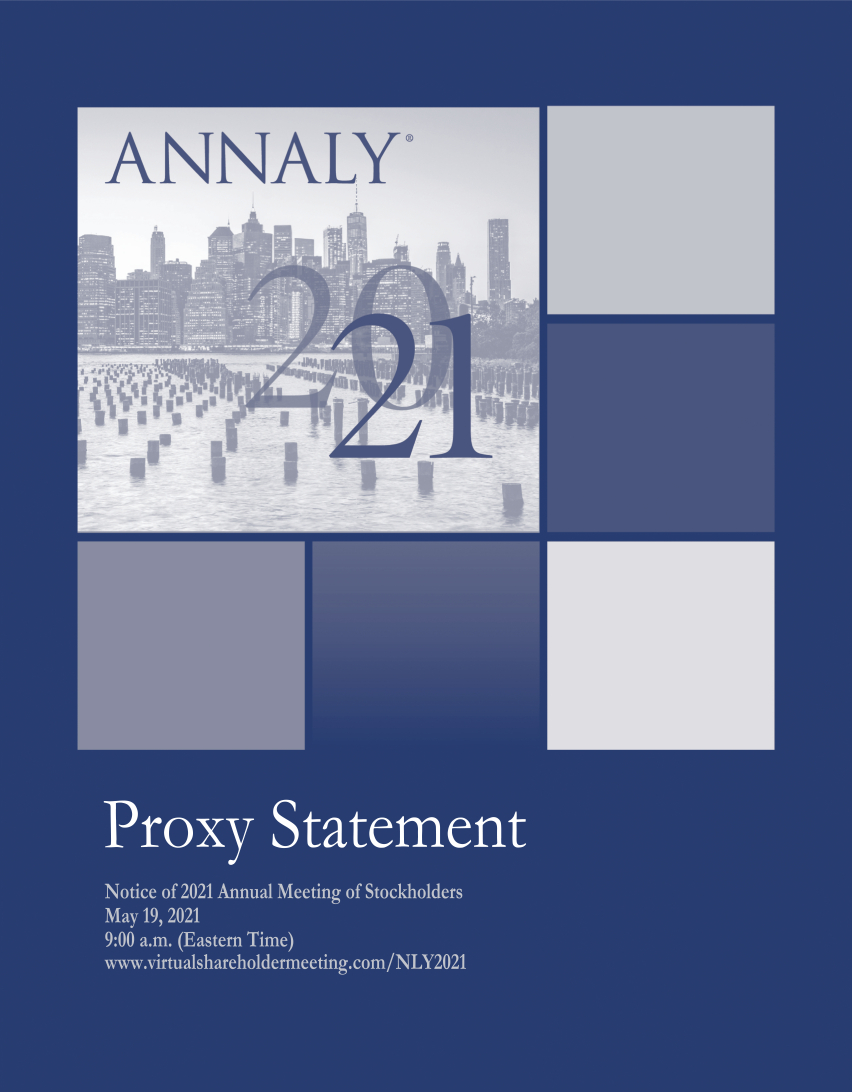






















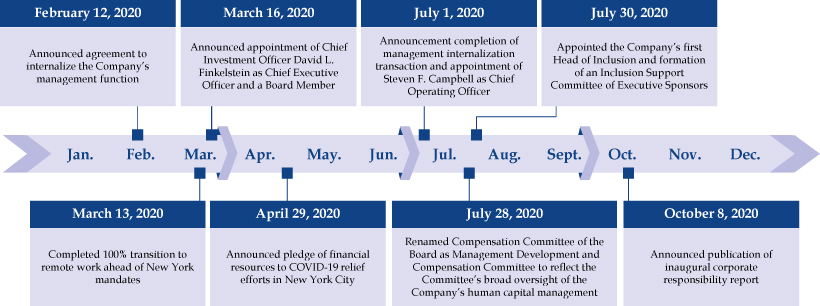


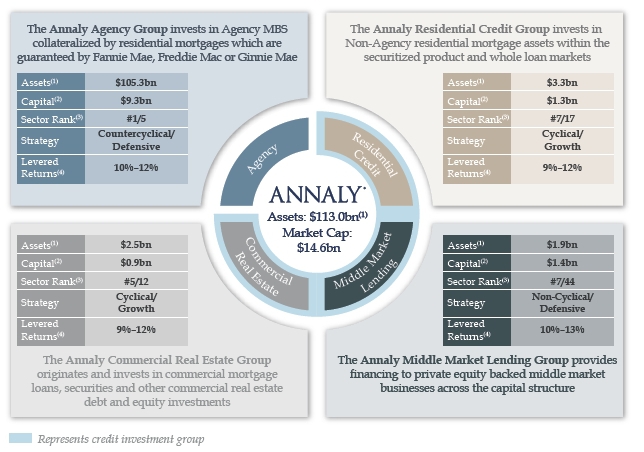


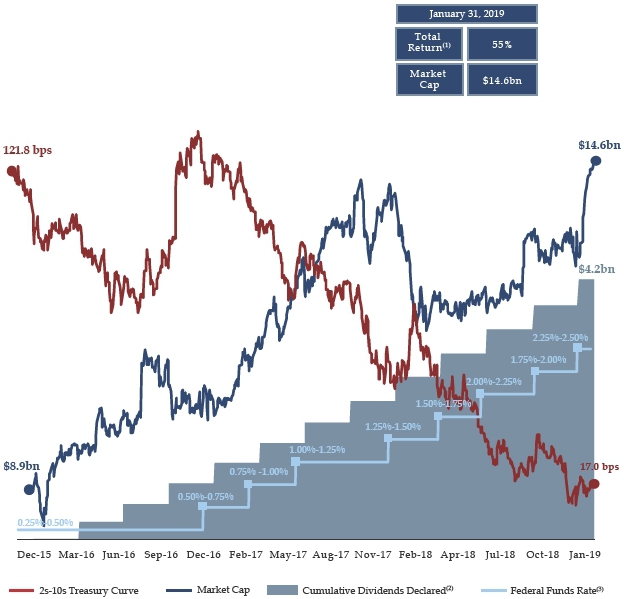
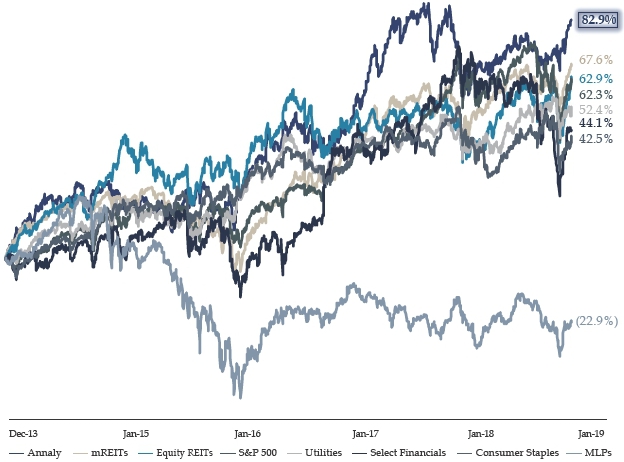



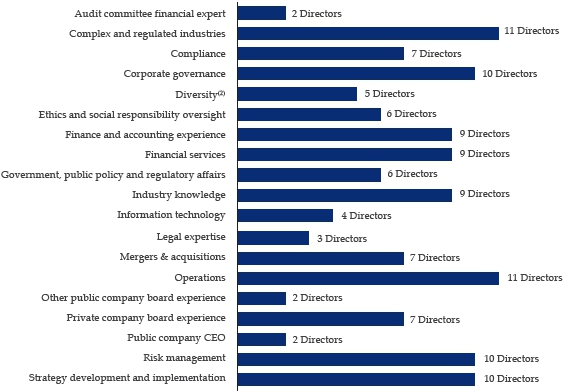




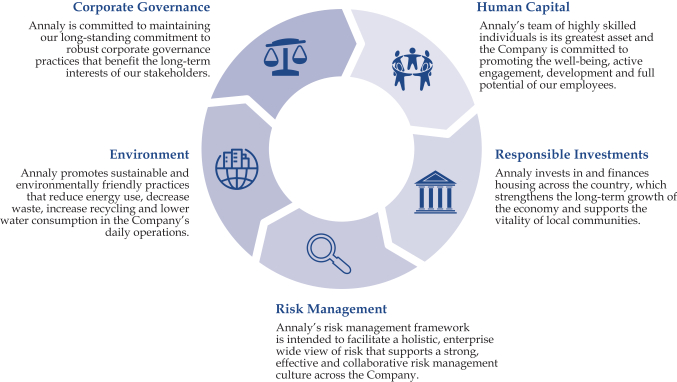







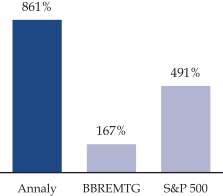

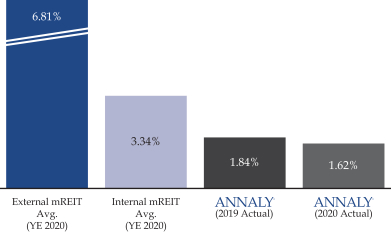
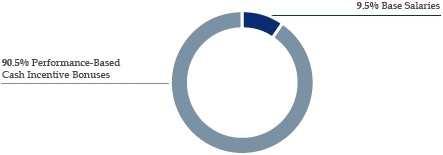

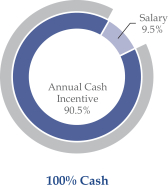



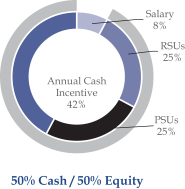








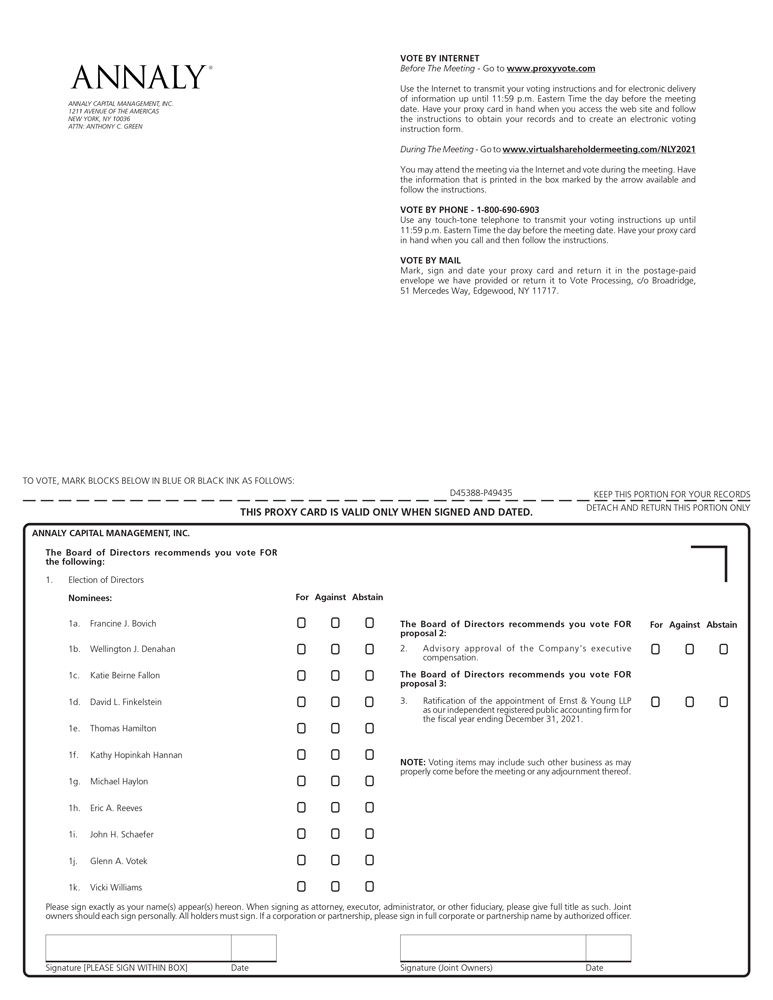 ANNALY CAPITAL MANAGEMENT, INC.
ANNALY CAPITAL MANAGEMENT, INC.
 Annaly Capital Management, Inc.
Annaly Capital Management, Inc.